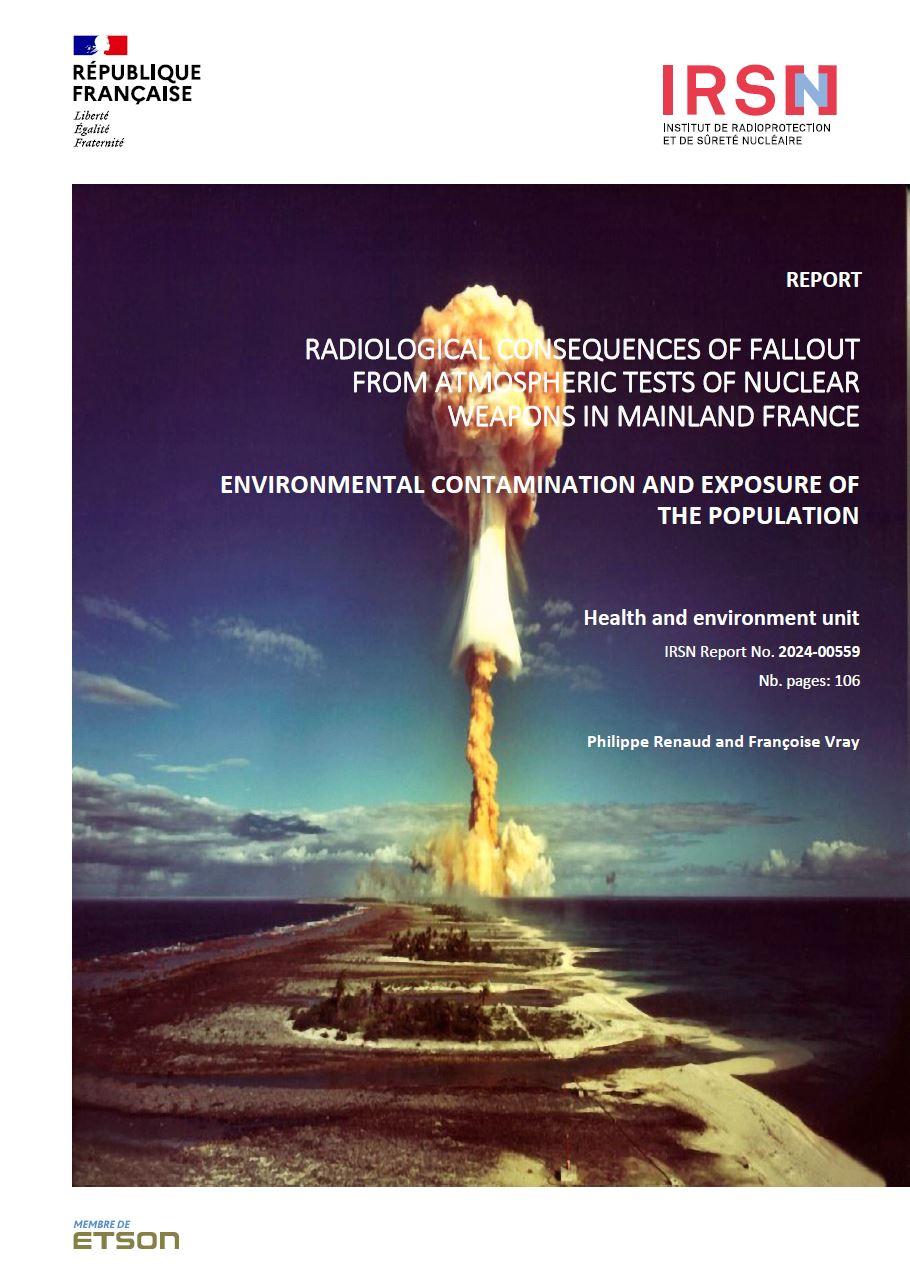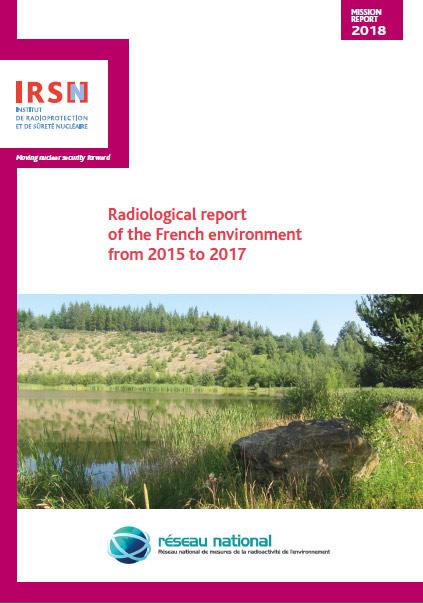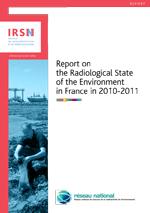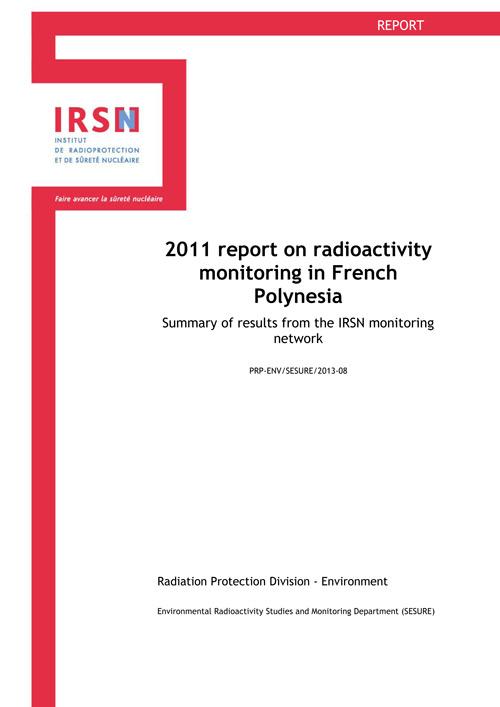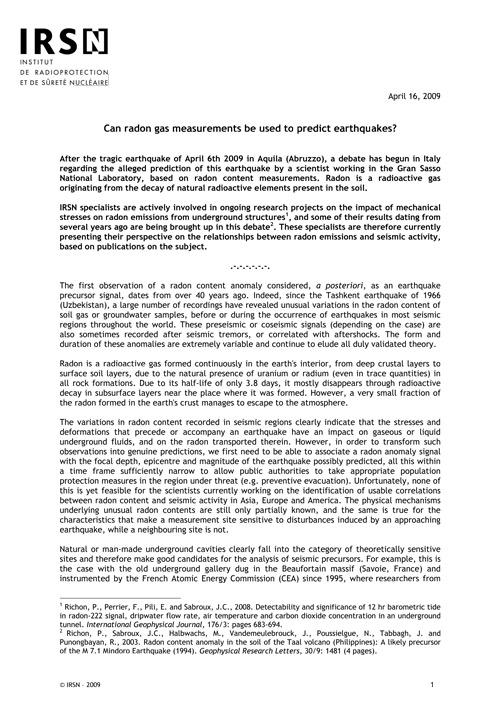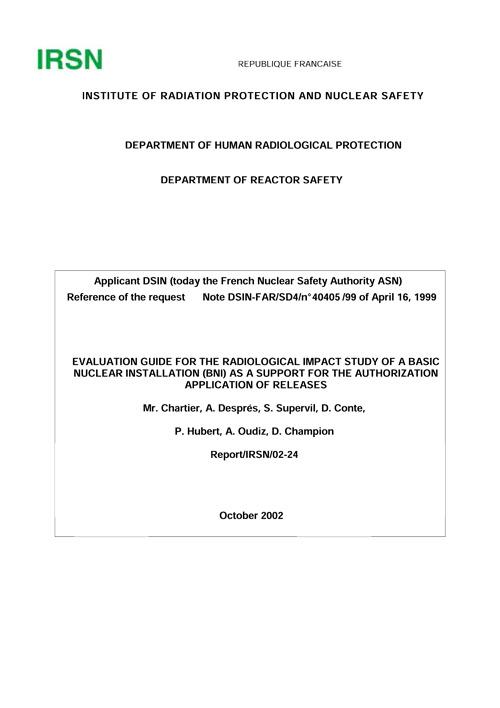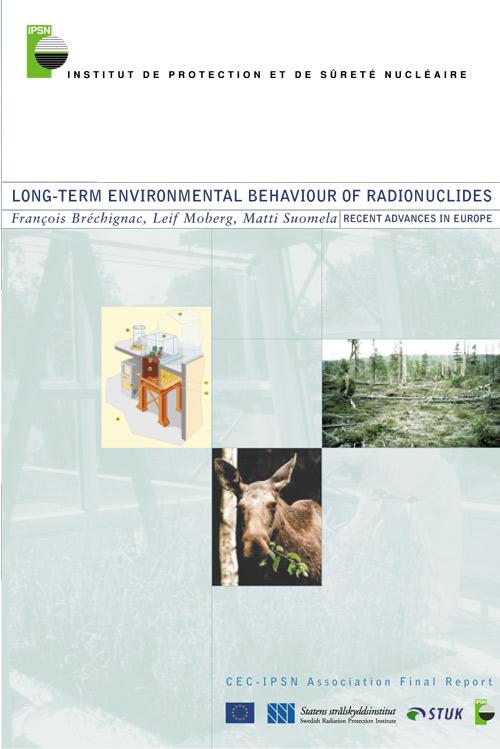Publications and reports: Environment
This page contains IRSN publications and reports on radiation protection monitoring activities of the environment.
2025
The atmospheric tests of nuclear weapons carried out from 1945 to 1980 by the United States, the USSR, the United Kingdom, China, and France caused environmental contamination with artificial radionuclides. This massive and worldwide addition of artificial radionuclides to the environment was greater in the northern hemisphere , especially between 40° and 50° northern latitude, the latitudinal band in which mainland France is located. These radionuclides produced in the air during nuclear explosions were dispersed in all parts of the environment, resulting in radiological exposure of the population, which is still ongoing
This exposure is a component of the radiological exposome, which is the study topic of the CORALE project (Radiological component of the exposome, multiple exposures, risks of cancer and other chronic diseases in the Constances cohort), conducted by the French Institute for Radiological Protection and Nuclear Safety (IRSN) in collaboration with UMS011 (National institute for health and medical Research Inserm / Paris Saclay University / Paris Cité University / Versailles Saint-Quentin-en-Yvelines University) which manages the Constances cohort.
In this context, the present study made it possible to reconstruct annual estimates of effective doses and organ doses received by the French population from 1945 to 2020 following these nuclear tests, according to age and place of residence, for the three main exposure pathways: inhalation of radionuclides in the air, external exposure to radioactive deposits and ingestion of contaminated foodstuffs.
These dosimetric reconstructions are mainly based on the results of measurements on samples of various kinds taken from the environment, by the Central Service for Protection against Ionising Radiation (SCPRI) and the Atomic Energy Commission (CEA) from 1961 to 1978, as well as by IRSN from 2008 to 2018 (IRSN, 2022), as part of radiological monitoring programmes. Nearly 50,000 measurement results of activity concentrations of radionuclides in the air, rainwater, various types of foodstuffs, including in the contents of meal trays from school canteens were used for this study.
The dose estimates obtained were compared with those made by UNSCEAR for the northern hemisphere, which were then used to supplement certain dosimetric estimates for specific periods for France.
After a general presentation of nuclear tests and their radioactive fallout, this document provides, in detail, all the methodological elements used to estimate the doses for each of the exposure pathways of the population.
The dose estimates obtained are then discussed with regard to their changes over time, the main radionuclides which have contributed to them, and their relative importance according to the organs irradiated and the age of the people exposed.
2019
The National Network for the Measurement of Radioactivity in the Environment (RNM), whose objectives are set by the Nuclear Safety Authority (ASN), centralizes and makes available to the public all the results of the radiological monitoring of the territories carried out by its members (state services, local authorities, non-governmental associations, public institutions and Nuclear Operators).
Every three years, they entrust IRSN with the task of analyzing, interpreting and presenting the results of this monitoring to the public. The 2015-2017 assessment report extends and completes the one prepared previously for the 2011-2014 period.
The assessment report highlights the high stability of radioactivity levels measured in the environment of nuclear facilities and sites, for which the releases have generally remained constant. However, there is a significant drop in environmental levels measured near the sites of Bruyères-le-Châtel (Essonne), Marcoule (Drôme) – whose tritium releases decreased by almost a factor of 10 between 2012 and 2016 - and the Laue-Langevin Institute in Grenoble - whose releases have been reduced by almost 40%).
As in the previous assessment report, the IRSN carried out an evaluation of the radiological exposure of the populations by means of environmental measurements carried out for the RNM. Although IRSN was unable to conduct the exercise for all the sites (because the radioactivity levels around some of the sites were practically non-measurable), IRSN was able to establish, for example, that the doses to the populations in the environment close to the Nuclear Power Plants are of the order of 1 microsievert per year (μSv / year), i.e. one thousandth of the regulatory limit (1000 μSv / year).
The one evaluated in the vicinity of the La Hague Nuclear Reprocessing Facility, is the highest recorded for this report, is 8 μSv / year. These assessments confirm the order of magnitude calculated by Operators through the modeling and monitoring of releases into the environment.
Download the Radiological report of the French environment from 2015 to 2017 (PDF File, 11 Mo)
2014
Report on the Radiological State of the Environment in France in 2010-2011 marks another major milestone in the French policy of nuclear transparency. More than 300,000 measurement results were analyzed for this report, which also incorporates data acquired between January 1, 2010 and June 30, 2011 across France to take into account the impact of the events at Fukushima.
For the first time, this IRSN report collates and comments on the results sent to the French National Environmental Radioactivity Measurement Network (RNM) by its members. This includes the results of measurements taken by the IRSN as part of its continuous radiation protection monitoring activities.
This latest edition of the report includes a number of changes related to the inclusion of data from RNM members, as well as improved content. The RNM network is part of an innovative initiative to improve the quality of radioactive measurements performed by certified laboratories and provide the public with fuller and clearer information on the radiological state of the environment.
On February 2, 2010, environmental monitoring organizations in France created the RNM Internet site (www.mesure-radioactivite.fr) as part of an initiative to centralize information on radioactivity and make measurement results more readily available to professionals and the general public alike. The site can thus be consulted for results regarding all environmental compartments, including air, water, flora and fauna, and the food chain.
Download the report on the Radiological State of the Environment in France in 2010-2011
2013
Radiological monitoring of the French environment is one of IRSN's permanent tasks as part of public policy on nuclear safety and radiological protection. It helps to guarantee the best possible protection for the population.
Carried out in Polynesia since 1962, this monitoring focuses on seven islands (Tahiti, Maupiti, Hao, Rangiroa, Hiva Oa, Mangareva and Tubuai) which are representative of the five archipelagoes. It consists in taking monthly samples of various kinds from the different environmental compartments (air, water, soil, food, etc.) with which the population may be in contact.
Regarding food, the samples analyzed are representative of the diet of Polynesians living in the five archipelagoes of the region and are taken from the marine environment of the open sea, the lagoon environment and the terrestrial environment.
Almost all samples are measured at the IRSN Laboratory for the Study and Monitoring of the Environment, based in Vairao on the island of Tahiti, plus a few samples at the IRSN Orsay Laboratory. The year 2011 was marked by the Fukushima nuclear accident, which occurred on March 11. Within this context, IRSN stepped up its monitoring activities in French Polynesia and was able to confirm the absence of radiological impact in New Caledonia and Polynesia. This report does not include all the data and results relating to the accident, but provides a summary for the year 2011.
As in recent years, levels of radioactivity, which fell steadily as of 1974 when French atmospheric nuclear weapons testing came to an end, were stable and very low in 2011. The residual radioactivity is mainly due to 137Cs. In terms of additional dose, this artificial and residual radioactivity is lower than 5 μSv.yr-1 (5 microsieverts per year). This corresponds to less than 0.5% of exposure due to natural radioactivity in Polynesia (approximately 1000 μSv.yr-1).
2009
After the tragic earthquake of April 6th 2009 in Aquila (Abruzzo), a debate has begun in Italy regarding the alleged prediction of this earthquake by a scientist working in the Gran Sasso National Laboratory, based on radon content measurements. Radon is a radioactive gas originating from the decay of natural radioactive elements present in the soil.
IRSN specialists are actively involved in ongoing research projects on the impact of mechanical stresses on radon emissions from underground structures, and some of their results dating from several years ago are being brought up in this debate. These specialists are therefore currently presenting their perspective on the relationships between radon emissions and seismic activity, based on publications on the subject.
2002
At the time of a licence application of effluent releases and water pumping of basic nuclear facilities (BNF), the operator of the installation must in particular provide a radiological impact study of the radioactive effluent releases coming from the installation on the environment and on pubic health.
An impact study of the radioactive releases represents technical and conditional specifications. It was for this reason that the French Safety Authority (ASN then DSIN) and the Directorate-General of Health Services (DGS) requested IRSN (then IPSN), in April 1999, to develop a guide facilitating the review of such a study, as well for the services implied in the examination of the licence applications, as for all the concerned parties in this field.
The objective of the guide is to take into account the regulatory context which underlies the development of the impact studies (decree n°95-540 of May 4, 1995, modified by the decree n°2002-460 of April 4, 2002, and the Euratom guidline 96/29 of May 13, 1996, known as “the basic standard guideline”, accompanied by its transposition texts in French law).
In this precise context, the guide proposes to assess the radiological impact study of a BNF from three different angles:
- the description and the quantification of the produced effluents, by taking account of the triggering processes, of the different processing measures and of the procedures to optimise the reduction of the produced effluents;
- the estimate of the dosimetric impact of the planned releases on the population, taking into account the environmental characteristics of the installation;
- the definition of the conditions to monitor the releases and the environment.
This guide provides a general condition logical framework adaptable to any particular situation met.
1999
The corresponding scientific findings from three projects – Peace, Landscape and Epora (involving 18 European laboratories) – have been collected together. These projects were managed by the IPSN for the European Commission (DG XII) in the framework of the programme Sûreté de la fission nucléaire (Nuclear fission safety programme).
In December 1996, the Institut de Protection et de Sûreté Nucléaire (IPSN) signed an Association contract (F14P-CT96-0039) with the European Commission (EC), Directorate General Research. Within the framework of the Association Contract, research in radiation protection was carried out in the fields covered by the Fourth Framework Programme on Nuclear Fission Safety.
The contract running over a period of 36 months from January 1, 1997 to December 31, 1999, contained 3 projects, which were executed by a total of 18 partners from all over Europe including Norway as a non EU member state funded by its own government.
The association contract covered the following topic "Evaluation of radiation risks: quantification of parameters which determine the fluxes of radionuclides in ecosystems, and long-term consequences of accidental contamination in semi-natural environments".
Download the report regarding the long-term development of radioactive nuclides in the environment.

